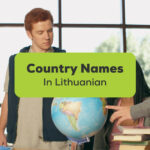Looking to interact with the locals? One place where you can meet more of the locals is in the nearest library. Libraries, or silid-aklatan in Tagalog, are not just quiet spaces filled with books. They are vibrant hubs of knowledge and learning where you can dive into a world of information and connect with the community. Knowing the right words in Tagalog library words can make your library experience even more exciting and help you engage with the locals. In this article, we’ll dive into a list of commonly used Tagalog terms for this place. So, let’s get started!
In the Philippines, libraries have always played a crucial role in promoting education and literacy. They serve as havens for readers, researchers, and students alike, offering a vast collection of books, resources, and digital materials. With their free access to information, these special places bridge the gap between the privileged and underprivileged, enabling everyone to expand their knowledge.
At the heart of the country’s library system stands the National Library of the Philippines. Established in 1901, the National Library serves as the repository of the nation’s intellectual heritage. Its primary mission is to preserve and provide access to the rich cultural and historical resources of the Philippines. When I personally visited it, I recognized one thing: This place serves as a hub for research, with specialized sections dedicated to various fields, including history, literature, science, and art. Its impressive archives and digital resources allow researchers to explore the depths of Filipino heritage and culture.
So if you’re interested in connecting with the locals in a more meaningful way, then you’ve got to learn the basic terminologies in the Tagalog language related to the library. So without further ado, let’s dive right into the translations.
Tagalog Words For Library Sections
Are you ready to embark on a linguistic journey through the different sections of a library? In this section, we’ll explore a variety of Tagalog words that correspond to various library sections. From fiction to history, children’s books to music, these words will help you navigate the library shelves with ease. So, let’s dive in and discover the Tagalog translations for different library sections:
| English | Tagalog |
|---|---|
| Periodicals Section | Seksyon para sa mga peryodiko |
| Literature Section | Seksyon para sa panitikan |
| Art Section | Seksyon para sa sining |
| Science Section | Seksyon para sa agham |
| History Section | Seksyon para sa kasaysayan |
| Children’s Section | Seksyon para sa mga pambata |
| Sports Section | Seksyon para sa pampalakasan |
| Music Section | Seksyon para sa musika |
| Biography Section | Seksyon para sa mga talambuhay |
These translations will enable you to easily locate your preferred genres and explore the rich array of materials available in each section. Whether you’re a fan of fiction, a history buff, or interested in delving into the world of music, these Tagalog words will enhance your library experience.

Tagalog Library Words
To fully immerse yourself in the library experience, it’s essential to familiarize yourself with basic terms for library materials. These words will help you navigate and appreciate the vast array of resources available. Here are some key English-Tagalog translations:
| English | Tagalog |
|---|---|
| Almanac | Almanak |
| Book | Aklat / Libro |
| Comic Books | Komiks |
| Dictionary | Talahulugan |
| Encyclopedia | Ensiklopedya |
| Magazine | Magasin |
| Manuscript | Manuskrito |
| Manuscript Collection | Koleksyon ng Manuskrito |
| Newspaper | Pahayagan / Dyaryo |
| Periodical | Peryodiko |
| References | Mga Tala |
| Reading Material | Babasahin |
| Thesis | Tesis |
| Multimedia | Multimidia |
These translations will prove invaluable as you explore different materials within the library. From books and magazines to digital resources and multimedia, you’ll now have the language tools to navigate the library’s diverse collection and delve into a world of knowledge and discovery.
The 10 Most Common Tagalog Library Words
Unsure which of the words you should learn? Here are the 10 words you need to master.
1. Aklatan
Aklatan, meaning “library,” is a sanctuary (santuwaryo) for knowledge seekers and book lovers. It is a place where one can lose themselves in the vast universe of literature and embark on intellectual adventures.
- Ako’y pupunta sa silid aklatan, gusto mo bang sumama? = I’m going to the library, do you want to come?
- Si Anna ay pumunta sa silid aklatan para mag-aral. = Anna went to the library to study.
2. Sinupan
Sinupan refers to the common steel-based “filing cabinet” in Tagalog. This precious cabinet preserves historical documents (dokumento), manuscripts (manuskrito), and artifacts, allowing future generations to delve into the past and learn from the wisdom of their ancestors.
- Pakilagay sa sinupan ang dokumentong ito. = Please put this document inside the filing cabinet.
- Pakikuha nga ng mga dokumentong ito mula sa sinupan. = Please get these documents from the filing cabinet.
3. Pahina
Pahina translates to “page.” In the context of libraries, it symbolizes the turning of a page, the beginning of a new chapter (bagong kabanata) in one’s quest for knowledge and personal growth.
- Pakibuksan ang inyong mga libro at buksan sa pahina labindalawa. = Please open your books and go to page 12.
- Ang buhay mo ay isang blangkong pahina. Ikaw ang magsusulat dito. = Your life is a blank page, you write on it.
4. Talaan
Talaan means “catalog” and plays a vital role in organizing and classifying library materials. It serves as a guide (gabay), leading avid readers to their desired books and resources.
- Gamitin ang talaan para makita mo ang iyong hinahanap. = Use the catalog to find what you’re looking for.
- Wala sa talaan ang librong hinahanap mo. = The book you are looking for is not listed in the catalog.

5. Malikhain
Malikhain, an adjective meaning “creative,” captures the essence of the Filipino spirit. It reflects the imaginative (mapanlikha) and resourceful (mapamaraan) nature of the Filipino people, who are known for their artistic endeavors and vibrant cultural expressions.
- Si Tomas ay malikhain pagdating sa singing. = Tomas is creative when it comes to art
- Malikhaing talaga siya. = He really is a creative person.
6. Lathala
Lathala pertains to “publication” or “printed materials.” It encompasses newspapers (pahayagan), magazines (magasin), and other forms of literature that disseminate information, ideas, and stories to the masses.
- Kailangan kong basahin ang mga luma mong lathala. = I need to read your old publications.
- Huwag natin ito ilathala. = Let’s not publish this.
7. Pag-aaral
Pag-aaral signifies “studying” or “learning” in Tagalog. It represents the pursuit of knowledge (kaalaman) and the commitment to continuous growth and self-improvement.
- Si Pedra ay pursigido sa pag-aaral. = Pedra is persistent in studying.
- Marami kang matututunan pag ikaw ay nagsipag sa pag-aaral. = You will learn a lot if you keep studying.
8. Manunulat
Manunulat refers to a “writer.” It embodies the power of words and the individuals who wield them. Filipino writers contribute to the literary (pampanitikan) landscape with their unique perspectives and narratives.
- Si Galapong ay isang batikang manunulat. = Galapong is a seasoned writer.
- Ang ABS-CBN ay maraming mga magagaling na manunulat. = ABS-CBN has many great writers.
9. Akda
Akda signifies “work” or “piece of writing.” It encapsulates the creative endeavors of Filipino authors (may-akda), poets (makata), and playwrights (manunulat ng dula), who enrich the literary canon with their thought-provoking and inspiring compositions.
- Ang akda ni Sulayman ay kahanga-hanga. = Sulayman’s work is excellent
- Hindi ganun kaganda ang akda ni Abdul. = Abdul’s work is not that good
10. Talasalitaan
Talasalitaan means “glossary” in Tagalog. It represents the ever-expanding lexicon of words (salita) that form the foundation of communication (komunikasyon), enabling people to express their ideas, feelings, and experiences.
- Ginamit ni Pipito ang talasalitaan. = Pipito used the glossary.
- Mayroong talasalitaan sa likod ng libro. = The glossary is at the back of the book.
Learn Tagalog With Ling
Whether you’re planning a trip to the Philippines or simply want to connect with Filipino culture, Ling is your ultimate companion for learning Tagalog. With a user-friendly interface, interactive lessons, and comprehensive language resources, Ling makes learning any language fun and enjoyable. From basic greetings to conversational phrases, the lessons from the inside guide you step by step, helping you build confidence in speaking your target language.
Ready to give it a try? Download the Ling app today from the App Store or Play Store to get started!



































































